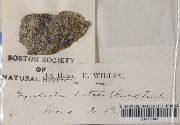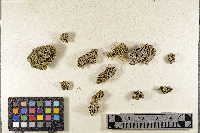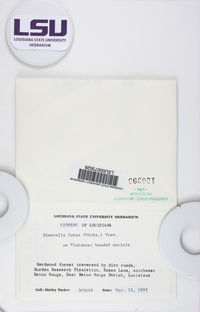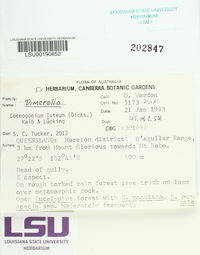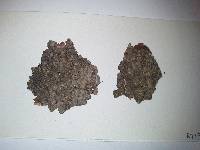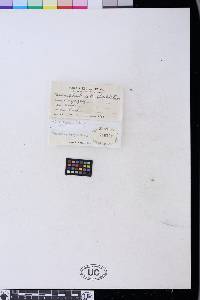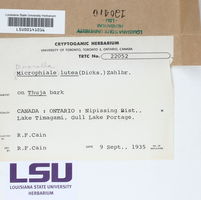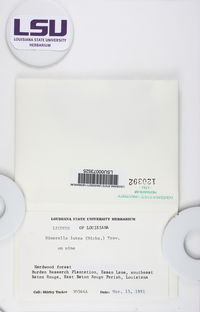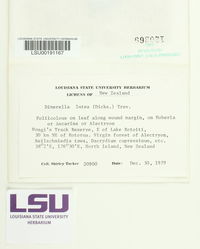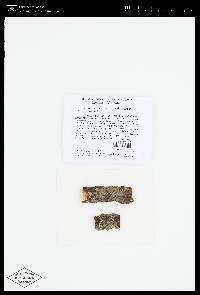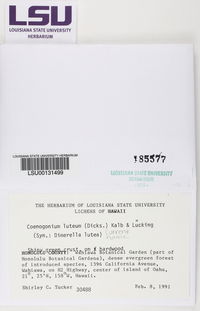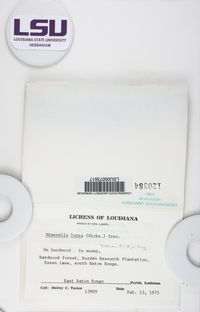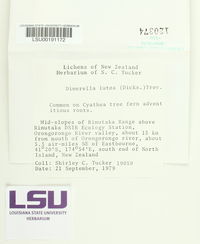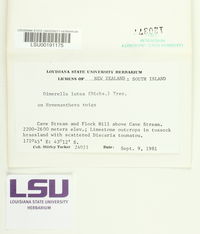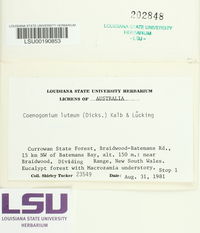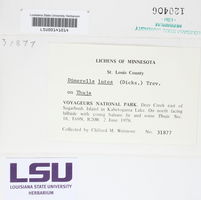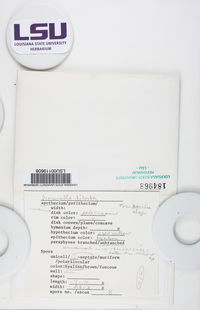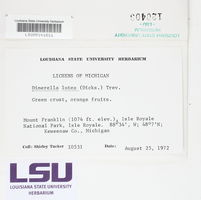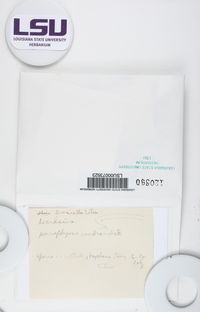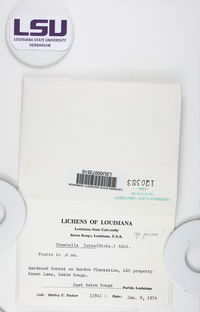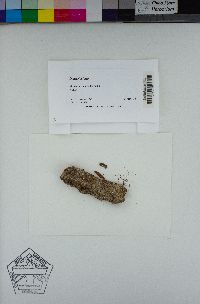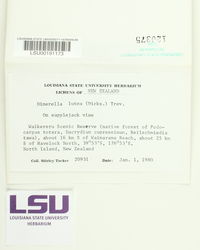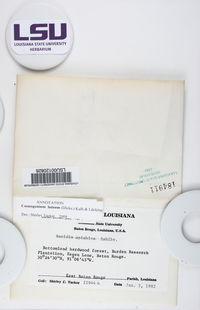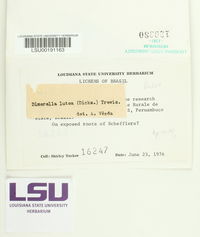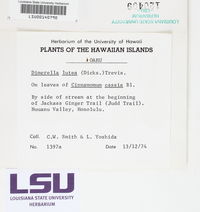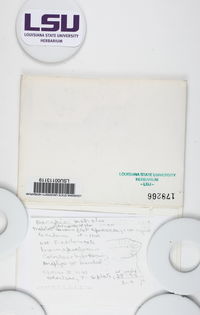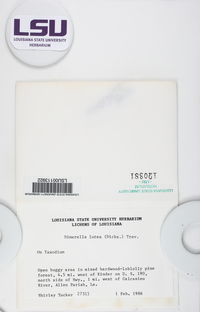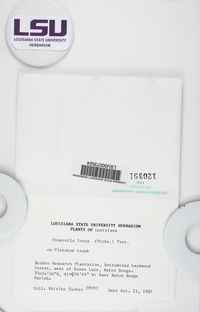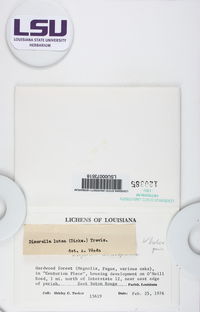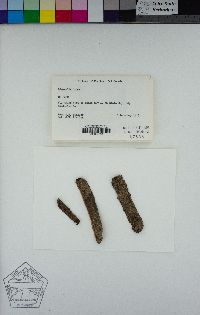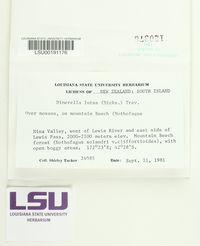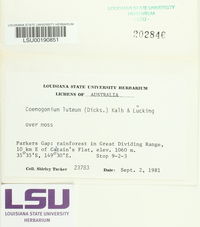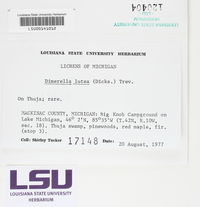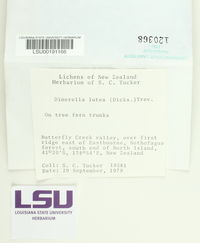
Consortium of Lichen Herbaria
- building a Global Consortium of Bryophytes and Lichens as keystones of cryptobiotic communities -
- Home
- Search
- Images
- Species Checklists
- US States: O-Z >
- US National Parks
- Central America
- South America
- US National Parks
- Southern Subpolar Region
|
|
|
|
Family: Coenogoniaceae
Orange Dimple Lichen
[Biatora lutea (Dicks.) Hepp, moreBiatorina lutea (Dicks.) Körb., Biatorinopsis lutea (Dicks.) Müll. Arg., Dimerella lutea (Dickson) Trevisan, Dimerella lutea f. lutea (Dicks.) Trevis., Gyalecta lutea (Dicks.) Hornem., Lecidea lutea (Dicks.) Taylor, Lecidea lutea var. eximia Nyl., Lecidea lutea var. lutea (Dicks.) Taylor, Lichen luteus Dicks., Microphiale lutea (Dicks.) Zahlbr., Microphiale lutea f. foliicola Zahlbr., Microphiale lutea f. lutea (Dicks.) Zahlbr., Microphiale lutea f. stenospora Zahlbr., Microphiale lutea f. theae Räsänen, Secoliga lutea (Dicks.) Norman] |
Nash, T.H., Ryan, B.D., Gries, C., Bungartz, F., (eds.) 2004. Lichen Flora of the Greater Sonoran Desert Region. Vol 2. Thallus: thin, spreading, up to 8 cm in diam., varnish-like, +continuous or cracked-areolate or lacking surface: pale yellowish green to dark olive-green in shaded situations Apothecia: common and conspicuous, sessile, round, 0.42 mm wide, usually scattered, clearly constricted below margin: pale flesh-colored, prominent, entire or flexuous, occasionally with faint pale pruina in older fruits disc: orange-yellow, red-orange to yellow-red, shallowly concave then convex, epruinose exciple: 40-60 µm thick hymenium: hyaline, (45-)60-80(-90) µm tall; paraphyses: 1.5-2.7 µm wide below, 4.5 µm apically ascospores: hyaline, 3-septate, fusiform to fusiform-ellipsoid, (6-)9-11(-14) x 2-3.5(-4) µm Pycnidia: +immersed conidia: ellipsoid, 3-4(-5) x 1.3-1.8 µm Spot tests: all negative Secondary metabolites: none detected. Substrate and ecology: on bark or moss over trees and siliceous rocks and accumulated soil, in humid, shaded sites World distribution: pantropical, extending into suboceanic temperate regions in both hemispheres Sonoran distribution: coastal, southern California, including the Channel Islands. |
|
|
|
Powered by Symbiota




